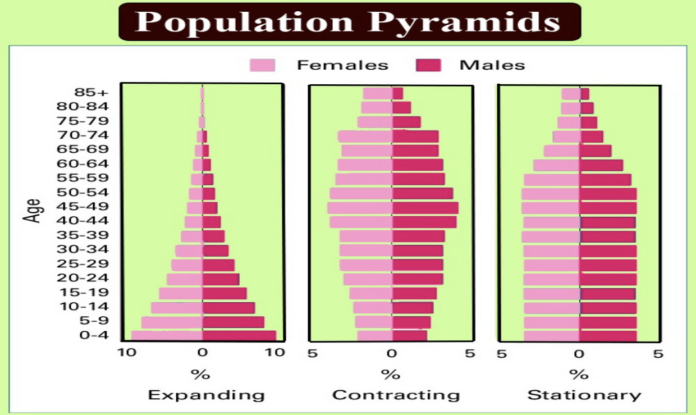The concept of a stationary population pyramid is pivotal in understanding demographic dynamics, as it encapsulates a population that is not experiencing significant growth or decline. This stability is indicated by a balanced distribution of individuals across various age cohorts. This essay delves into the intricacies of a stationary population pyramid, exploring its characteristics, implications for society, and relevance in contemporary demographic studies.
At its core, a stationary population pyramid epitomizes a unique phase in demographic transition—a stage characterized by low birth and death rates. Understanding its morphology is essential for scholars and policymakers alike, as it reveals insights into population sustainability, economic stability, and social structures.
This article will address the following dimensions of contemporary population studies:
The Structural Facets of the Stationary Population Pyramid
A stationary population pyramid typically presents a symmetrical shape, where the number of individuals in younger age groups mirrors those in the older cohorts. This phenomenon arises due to a balance between births and deaths, steering the population towards equilibrium. Such a structure infers that the fertility rate has dropped to the level of replacement, approximately 2.1 children per woman, which is necessary to maintain the population size in the absence of immigration.
Graphically, a stationary population pyramid can be visualized as an hourglass or a column, with evenly distributed bars representing the population across age groups. This contrasts starkly with expansive or constrictive pyramids, which reflect rapid growth or demographic decline, respectively. The distinctive shape is a visual testament to the ages and proportions of different cohorts within society.
Moreover, the intricacies of a stationary population pyramid can reveal gender ratios, socio-economic conditions, and even cultural tendencies within a particular region. For instance, factors such as healthcare access, educational attainment, and workforce participation rates significantly influence the demographic structure. These underlying indicators shape the foundations of societal constructs and contribute to the overall sustainability of the population.
The Societal Implications of a Stationary Population
The implications of a stationary pyramid stretch far beyond mere numbers; they reverberate through economic, social, and political domains. A stationary population can signify a mature economy, where resources are allocated more efficiently, and the labor force is mainly composed of skilled individuals due to higher educational attainment.
From an economic perspective, a stable population reduces the pressures associated with rapid growth, such as inadequate infrastructure, unemployment, and resource depletion. This creates a conducive environment for investments and fosters innovation, as a well-balanced workforce fuels productivity. Furthermore, governments in societies with stationary population pyramids may find it easier to implement policies aimed at enhancing quality of life, as they can focus on improving existing systems rather than scrambling to expand them.
However, challenges abound even in such structural stability. An aging population can impose significant burdens on welfare and healthcare systems, demanding increased funding and resources to address the unique needs of older individuals. Societies may face a “dependency ratio” dilemma, where the working-age population—those between 15 and 64 years—struggles to support the elderly population, contributing to potential economic strain.
The Intersection of Policy and Population Pyramids
Effective policy-making is critical in responding to the challenges posed by stationary population pyramids. Governments must adopt comprehensive strategies that encompass family support, eldercare, and labor market responsiveness to ensure equity and sustainability. These policies should be informed by robust data analyses and projections that account for the nuances of demographic shifts.
Furthermore, immigration policies may come to the forefront as a means to counteract the stagnation inherent in a stationary population. By attracting younger immigrants, countries can revitalize their workforce and mitigate the adverse effects of an aging populace. However, it is essential that these policies are crafted with sensitivity towards social cohesion and cultural integration.
The Role of Education and Awareness in Shaping Demographic Futures
In conclusion, a thorough understanding of the stationary population pyramid is indispensable not only for demographers but also for policymakers, educators, and the general public. Education plays a pivotal role in conveying the significance of demographic studies and their impact on societal structures.
Awareness campaigns centered around reproductive health and family planning can help stabilize birth rates and promote informed decision-making about family size. By fostering dialogue within communities about the implications of demographic changes, societies can navigate the complexities of stationary population structures with greater resilience.
Ultimately, a balanced approach that integrates economic, social, and educational policies will ensure that stationary population pyramids do not become barriers to progress but rather catalysts for sustainable development. This comprehensive understanding cultivates a rich garden of knowledge—where demographic data metamorphoses into insightful strategies that foster growth, equality, and community involvement.





























